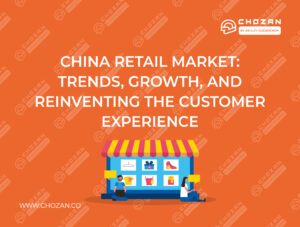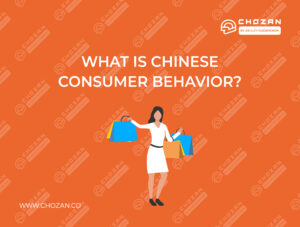China’s KOL economy has been one of the fastest-growing and most durable economic phenomenons for a while now. Despite the fact that brands are progressively building their own live shopping channels, individual KOLs continue to account for the majority of sales volume. In China, there are around 10 million KOLs, almost all of whom are controlled by MCN (multi-channel network) firms, which number in the hundreds of thousands.
Word-of-mouth marketing is a powerful tool for influencing Chinese consumers’ purchase behaviour. Examples include the fact that by 2021, 48% of Gen Z e-commerce purchases were influenced by KOLs. KOLs have a significant impact in China, and this is predicted to translate into a market worth of USD 27.05 billion (RMB 180 billion) by 2022.
Brands choose appropriate KOLs to launch campaigns based on the brands’ images and goals. For brands who wish to enter the Chinese market, KOL marketing has proved to become indispensable.
What is a KOL?
A KOL is a Key Opinion Leader.
Also known as a thought leader, influencer or lifestyle guru, they can be powerful in influencing the buying behaviour of their social media followers and others.
Who are the influencers in China?
The Chinese market currently has more noise and less trust than ever before so Chinese consumers seek direction from people they trust when making purchasing decisions. With the growth of social media platforms such as WeChat and Weibo, China’s influencers are becoming more numerous and increasingly diverse. Their popularity is undeniable.
They are:
- columnists
- socialites
- bloggers
- popular personalities
They continue to successfully grow audiences on:
- Xiaohongshu
- Douyin
- Taobao
- Douban
- and other social media platforms
KOLs are:
- travel professionals
- magazine editors
- journalists
- hobbyists
- business people
- photographers
- chefs…
The list goes on.
How influential are KOLs in China?
Engaging KOLs or influential bloggers is one of the most effective ways to promote a brand or industry. KOLs can assist through content creation, online campaigns, voting in contests or live streaming. They have their own follower bases and their opinions and suggestions are considered credible and informed. Sharing company information or launching campaigns with bloggers can raise awareness, attract new followers, and contribute to brand credibility.
How to have a successful KOL campaign in China
Before you start, make sure you have a strategic plan with a clear vision for each phase and an actionable plan with clear objectives.
For instance, “cooperate with 3 KOLs to have a monthly campaign. Each campaign is expected to drive 10,000 people to e-commerce platforms and increase 50,0000 RMB sales transactions.” Once your plan is outlined, partner with trusted KOLs who will contribute to said goals.
Brands need clear ideas of their targeted consumers in order to find the best-fitted influencers to help win businesses. Besides, brand companies should formulate a complete content strategy as KOL marketing is still a part of content marketing.
Keep in mind that Chinese consumers are increasingly sensitive to overly promoting or sponsored content. The subtler the sell and the more authentic the content, the better the reactions from the audience. At the end of each campaign, follow up on the performance, analyse the data, and adjust your upcoming strategy based on the findings.
Types of KOLs in Mainland China
There are three types of KOLs on Weibo: Celebrities, influential bloggers and Wanghong. In addition, KOLs are often active in Weibo Communities and on Weibo Interest Pages.
1. Celebrities
Celebrity KOLs are famous actors, singers, TV personalities, industry experts, entrepreneurs and others. Celebrity KOLs are responsible for the most effective KOL marketing in China as they usually have the largest and most dedicated follower bases. They rarely engage in promotions, but when they do, they have a potent effect. However, it can be challenging to find the most suitable spokesperson to represent your brand and then negotiate terms with them.

Source: Weibo
Xie Na (@谢娜), a popular Chinese host, singer and actress, has over 120 million followers on Weibo.
2. Bloggers
Bloggers usually create and post original content. They share life stories or inspiring moments. Their aim is to connect with followers on a personal level. Most bloggers will carefully check and verify their content before posting it and rarely agree to advertise a product if it doesn’t fit their style and audience. Most of the time, they prefer to write reviews of products or services based on their personal experience.

Source: Weibo
Shanwei (@神威) , a famous travel blogger, has over 9 million fans on Weibo.
3. Wanghong
Wanghong, which literally means “Web Celebrity” in Chinese, is a type of KOL that has sprung up in recent years. Unlike bloggers, most Wanghong are famous for their appearance. They’re fashionistas or beauty gurus who frequently post selfies to attract followers. However, many have started to focus on creating original content. Wanghong have huge fan bases, yet the cost of advertising with them is far lower than the price of engaging traditional celebrities. Sometimes, the promotional effect of Wanghong goes well beyond that of mainstream celebrities.

Source: Weibo
Xiaozhai (@林小宅), a fashion Wanghong, posts about fashion and music. She has over 11 million fans.
4. Communities and Interest Pages
These types of accounts are usually managed by agencies and are geared for product promotion. These accounts primarily focus on collecting and sharing news from different brands. Users tend to follow these pages to learn the latest information from brands and learn about events in different regions. Some of these accounts focus on narrow topics or get all their content from platforms outside of China.

Bo Wu Za Zhi is the official account of Natural History Magazine. It’s a popular community page. Followers like to ask questions about maths, biology, physics and geography, tagging the page for an answer.
Four Ways to Work with KOLs
KOL marketing formats are diverse. In this section we’ll discuss the most common and effective ways to cooperate with KOLs.
1. Sponsored Posts
A sponsored post is when a KOL is paid to publish content about the brand in his or her own voice. The content outline and other materials are usually provided by the brand and each blogger styles the content in a way that makes it unique. A brand can also draft a WeChat article in its own style and ask selected KOLs to publish it on their accounts. The KOL may adjust the content a bit before publishing.
Yi Mengling (@易梦玲), a blogger, reposted an article from luxury brand Roger Vivier about their new 2022 Autumn-Winter series that features her image.
Sponsored articles can be used to promote brands, products, services, campaigns and more.
2. Giveaways through KOLs
Promoting giveaways, for gift cards or exclusive gifts, through a blogger is a good way to raise public interest and create excitement about your brand. You can ask them to launch giveaway campaigns on their social media page and encourage their followers to participate. Note that the KOLs usually charge for sponsored posts and giveaways separately. This is because giveaway campaigns require extra time to set up, promote and select winners.
Popular singer, Jackson Wang, has over 30 million followers on Weibo. He recently posted a video where he talks about Snickers chocolate and promoted a giveaway launched by the brand.
3. Product Reviews
Product reviews are a powerful form of KOL marketing that can add credibility to your brand and convince potential customers to buy your products. While most bloggers accept free sponsored products they may not necessarily give editorial coverage as a result. In China, KOLs expect compensation if you want to receive high quality feedback from them. As the popularity of live streaming has spread across China, live product trials have become an effective way to attract customers.
Ryiii, a famous cosmetics blogger, shared reviews for products from different brands such as Givenchy and SKII.
How to avoid fake KOLS in China?
Researching on different platforms will be helpful.
Normally, real KOLs are active on more than one platform. If you are tempted to work with a KOL who is found only on one platform, do reconsider your decision. On top of that, consider your targeted campaign results as the effect of multi-platforms is more powerful.
To identify KOLs’ authenticity, you may also check their follower’s profiles and go through the comments under various posts to verify if the activities are related to the KOLs’ accounts.
Analytical tools would also be helpful to understand the data on post views, likes, shares, and follower growth. You should also avoid KOLs with clickbait contents as successful KOLs have developed their audience overtime and are in no rush to grow a massive following overnight.
FAQ about KOL marketing in China
What are the KOL Trends for 2023?
Virtual KOLs
Virtual idols’ rising star power has led several experts in the American entertainment industry to estimate that by 2025, they will account for 50% of the market. In China as well, the future of virtual KOLs seems bright, with the core market value predicted to hit 20.52 billion yuan by 2023.
Source: Leadleo
According to data compiled by LeadLeo, 62.7% of users enjoy following virtual influencers because they are immune to bad press and never age. Another 49.6% attribute their enjoyment to an interest in ACGN culture, and 36% report using this form of entertainment to combat negative feelings like anxiety and isolation. Some virtual idols will share their life attitudes, travel habits, fashion opinions, and favourite foods and snacks with their supporters, giving them a sense of emotional connection and identification with the idol and gaining their hearts. This new fad in pop culture muddied the lines between fiction and reality, feeding fans’ fantasies and satisfying their psychological wants and needs.
Smaller KOLs on the rise
The need for more genuine, in-depth tastes among Chinese consumers is the primary force behind the shift from larger influencers to newer influencers. The rigid structure and lack of true views among KOLs is opening the way for a new breed of Chinese influencers.
Not to mention recent scandals from both Viya and Austin Li, both big-time KOLs, have stirred the pot even more. Consumers and viewers think the going to smaller KOLs would mean gaining more genuine feedback and opinions.
Is KOL marketing worthy in China?
Yes, KOL marketing is the largely adopted trend in China. Successful KOLs listen to and engage with fans, who trust and look up to the KOLs.
This type of relationship can convert the traffic into sales results. At the same time, KOLs have the power to designate trends through their influences, which is exactly what brands are looking for.
Are KOLs and influencers the same in China?
No, KOLs are active on different platforms for diverse categories, while there are the vertical category influencers. Major influencer industries include fashion, beauty, travel, lifestyle, entertainment, fitness, business and more.
DISCOVER OUR CHINA KOLS & INFLUENCERS TRAINING
Read more related posts
-
KOL Marketing: An Essential Chinese Social Media Tool
China’s KOL economy has been one of the fastest-growing and most durable economic phenomenon in recent years. In the second half of 2019, multiple Chinese e-commerce platforms launched KOL strategies,…
-
KOL Marketing: An Essential Chinese Social Media Tool
China’s KOL economy has been one of the fastest-growing and most durable economic phenomenon in recent years. In the second half of 2019, multiple Chinese e-commerce platforms launched KOL strategies,…
-
KOL Marketing: An Essential Chinese Social Media Tool
China’s KOL economy has been one of the fastest-growing and most durable economic phenomenon in recent years. In the second half of 2019, multiple Chinese e-commerce platforms launched KOL strategies,…
-
KOL Marketing: An Essential Chinese Social Media Tool
China’s KOL economy has been one of the fastest-growing and most durable economic phenomenon in recent years. In the second half of 2019, multiple Chinese e-commerce platforms launched KOL strategies,…
-
Social Media Marketing: Four Chinese Campaigns to Learn From
There is no denying that social media is the best way to approach target customers and raise brand awareness in China, as the country has an extraordinarily high mobile device…






